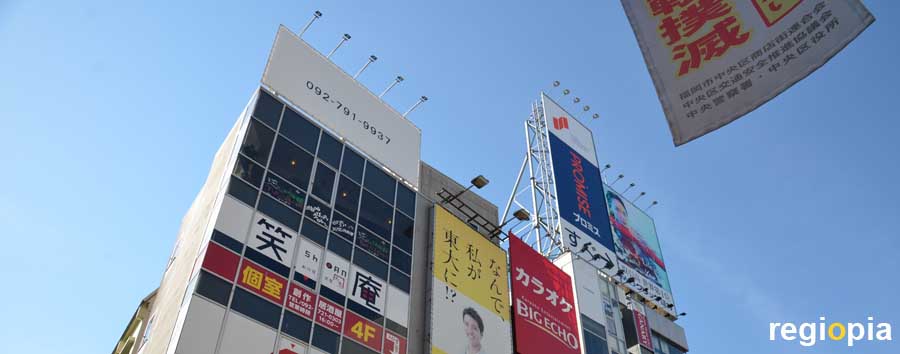
Fukuoka city centre
Fukuoka is the city of Japan that is closest to mainland Asia. The South Korean Busan is only 200 kilometers away. As a result, ideas and knowledge from China and Korea mostly reached Japan via Fukuoka. Rice, noodles and Zen Buddhism came to the country via Fukuoka. The Mongols tried in vain to land in Fukuoka Bay. The largest city on Kyushu Island has therefore many attractions to offer. Due to its location directly on the sea, Fukuoka also has a very high recreational value. This travel guide shows you the top sights and attractions of Fukuoka.
Today's Fukuoka is an amalgamation of the two cities Hakata and Fukuoka. Hakata is on the east bank of the Naka River and Fukuoka to the west. The Hakata district is home to the main train station and the old town with temples that are well worth seeing.
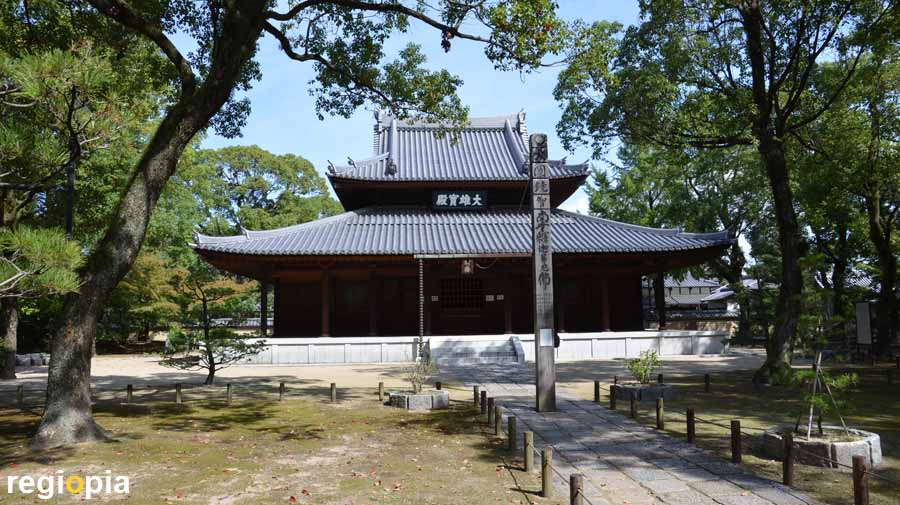
Shofuku-ji
The Shofuku-ji is considered the oldest Zen Buddhist temple in Japan and is therefore the most important attraction in Fukuoka. The temple was founded in 1195 by the monk Eisai, who brought Zen Buddhism and tea from China. The famous Zen master Myoan Eisai taught here, and founded the Rinzai School. In Kyoto he founded the Kennin-ji and in Kamakura the Jufuku-ji. The Shofuku Temple still belongs to the Rinzai school today. The name means "temple of sublime happiness".
The temple complex consists of an open park with large trees and several wooden structures. This is also where the Sanmon stands, the former main gate of Fukuoka Castle, which was erected here in 1918. Behind the gate is the large temple hall (photo). Another wall separates the monastery from the public area. Zen Buddhism is still practiced here.
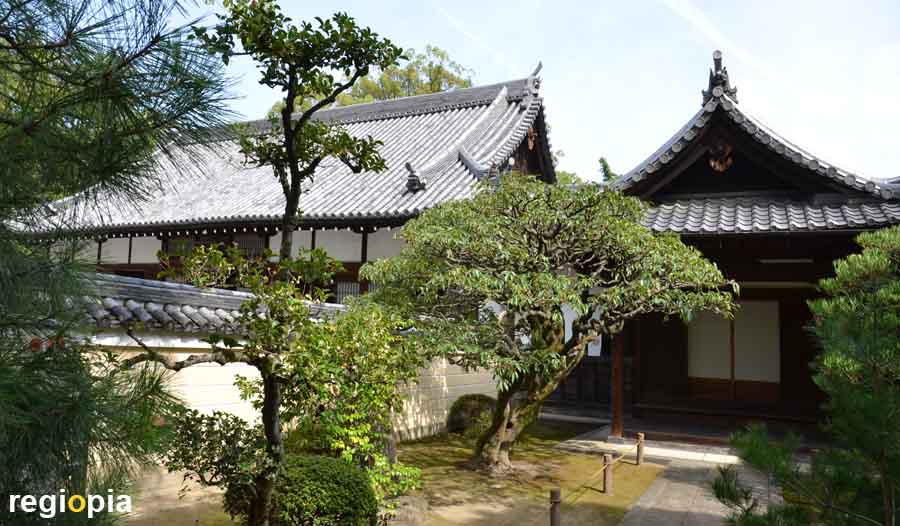
Joten-Ji
The Joten-Ji is very close to the Shofuku-ji. The Joten Temple was founded in 1241 and was completed in 1242 thanks to a donation from a wealthy Chinese trader. The Joten-Ji is famous for its founder, the monk Enni Benen. He studied Tendai Buddhism in China and, in addition to theological principles, brought udon and soba noodles as well as the yokan bean paste to Japan. In the entrance area on the left, stone steles were set up to commemorate this episode. The temple itself is beautiful but not spectacular.
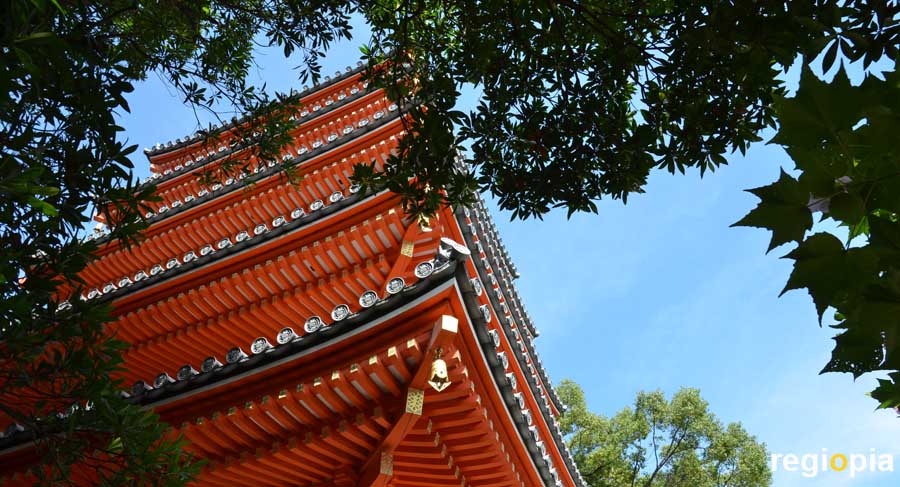
Tocho-ji
The Tocho Temple is also located in Hakata, but is much older than the Zen temples. The Tocho-ji was founded by the famous monk Kukai. In 804 he traveled to the Chinese capital Changan to study Buddhist scriptures at the Qing Long Temple. After less than two years in China, he returned to Fukuoka and founded the Tocho Temple in 806. Not at the current location, however, but a little closer to the sea. Around 1600 the old temple burned down and was rebuilt in Hakata. This temple was completely destroyed in World War II.
Today's Tocho-ji consists mainly of new buildings that are reminiscent of traditional structures. The main hall, Daibutsu, is a concrete structure. Nevertheless, the temple is worth seeing because of the Gojunoto Pagoda (photo) and the hexagon hall with a wooden figure of the meditating Kukai.
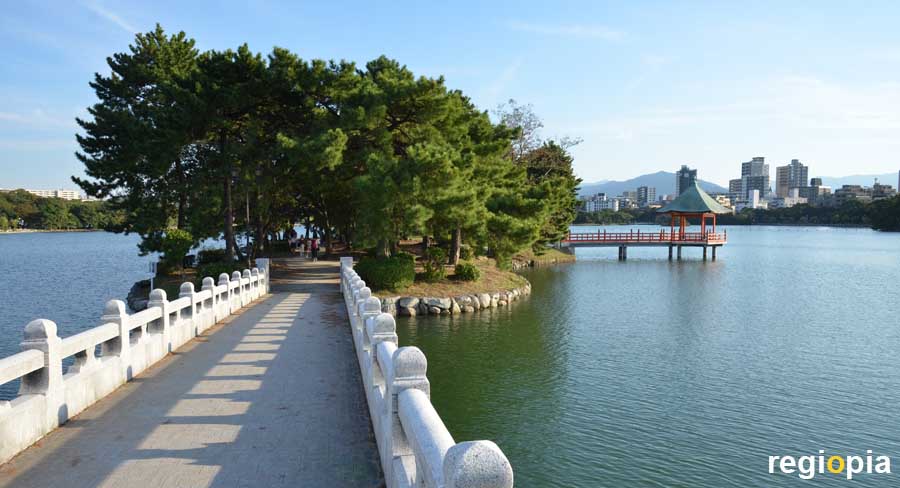
Ohori Park
Ohori Park used to be part of the outer fortifications of Fukuoka Castle, the remains of which can still be found east of the park. The castle was built in 1607 and abandoned after the Meiji Restoration. The Ohori Park was created in 1929 on the initiative of Honda Seiroku, who had previously designed the Hibiya Park in Tokyo. The park consists almost entirely of a lake and narrow islands that cut through the lake in a north-south direction. The small islands are connected with bridges so that you can cross the lake completely. This design principle cites the West Lake in Hangzhou (China).
There are trees and a path all around the lake. In the background you can see high-rise buildings and the surrounding green mountains. Ohori Park is one of the top attractions in Fukuoka. It is just a few meters from the Ohori Park / Fukuoka Art Museum subway station to the entrance of the park.
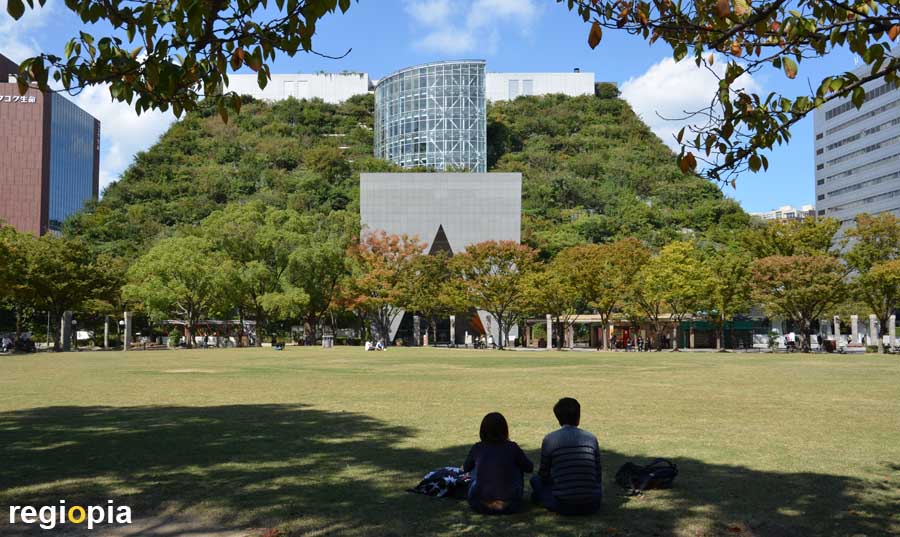
Tenjin Park
Tenjin Central Park is right in the center of Fukuoka. The park has two parts, one part is located directly on the Naka River, here is the Kihinkan Hall and the Fuku-Haku-Deai Bridge connects the park with Hakata. The other part of Tenjin Park is on the Yakuin Shinkawa River. The building "Acros Fukuoka" is on the north side of the park. The congress center with symphony and tourist information is wooded on this side. The stepped building works like a park. You can climb the stairs all the way up and look over the roofs of Fukuoka. The Acros Fukuoka is a successful example of green architecture. The building was designed by New York architect Emilio Ambasz and erected in 1990. Two rows of different cherry trees have been planted at Tenjin Central Park, making it a popular place to watch the cherry blossoms at the Hanami festival.
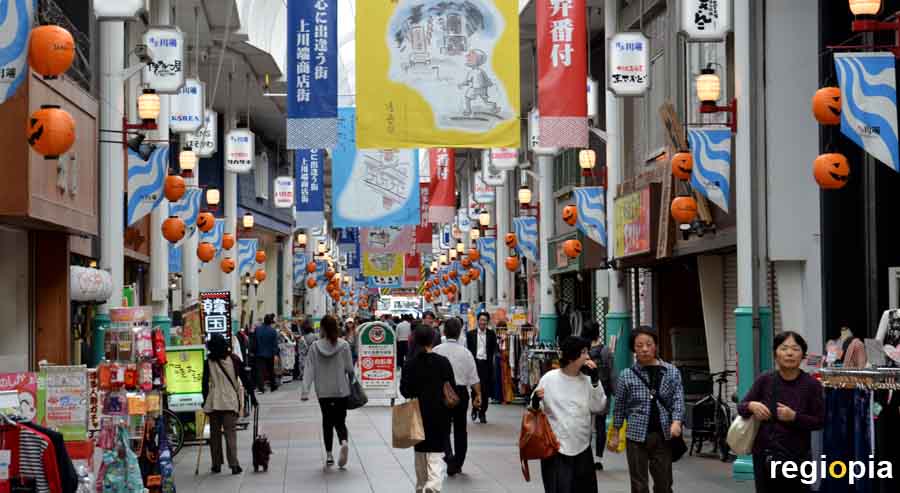
Kawabata Shopping Arcade
The covered shopping street Kawabata runs parallel to the Hakata River. It begins in the southeast at the Kushida Shrine and ends in the northwest at the Meiji-Dori. The Kawabata Shopping Arcade is 440 meters long. At this length it is crossed by two streets. Except for these two crossings, the Kawabata is a pure pedestrian zone. In the shopping arcade you will find goods for everyday needs and rather cheap items. The Kawabata Shopping Arcade is not an elegant passage.
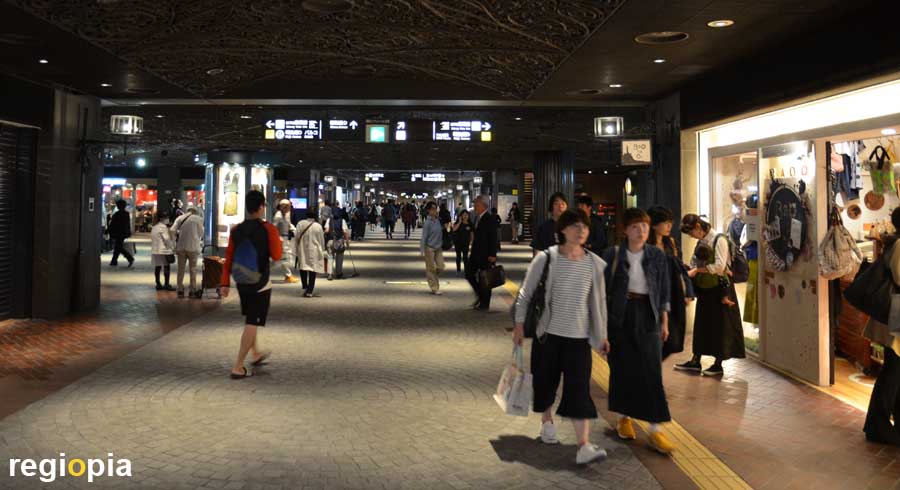
Tenjin Chikagai Underground Shopping Mall
The "Tenjin Chikagai Underground Shopping Mall" is an exclusive shopping arcade under Watanabe Dori. It is bounded by the Showa Dori in the north and the Kokutai Dori in the south of the city center. Numerous stairs lead to the underground passage. The shopping street can also be reached from department stores and shops. The passage also connects the two subway stations Tenjin and Tenjin-Minami, which ensures a steady flow of visitors. The Chikagai Underground Shopping Mall has an elegant design concept with high quality materials. The shops are elegant and expensive.
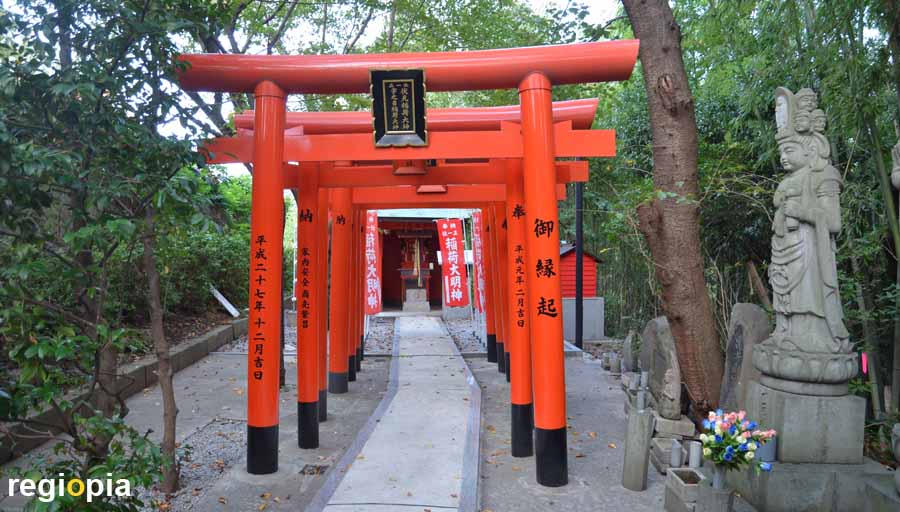
Atago Shrine
The Atago Shrine is located on a hill at the confluence of the Muromi River and Fukuoka Bay. You climb up the hill via many stairs until you see the red tori at the end. Tucked away to the side is a small shrine with lots of colorful paper cranes. The actual temple is on top of the mountain, from which you have a beautiful view over Fukuoka and the ocean. The Shinto temple is dedicated to the patron god Atago Gongen, who is supposed to protect the city from fire.
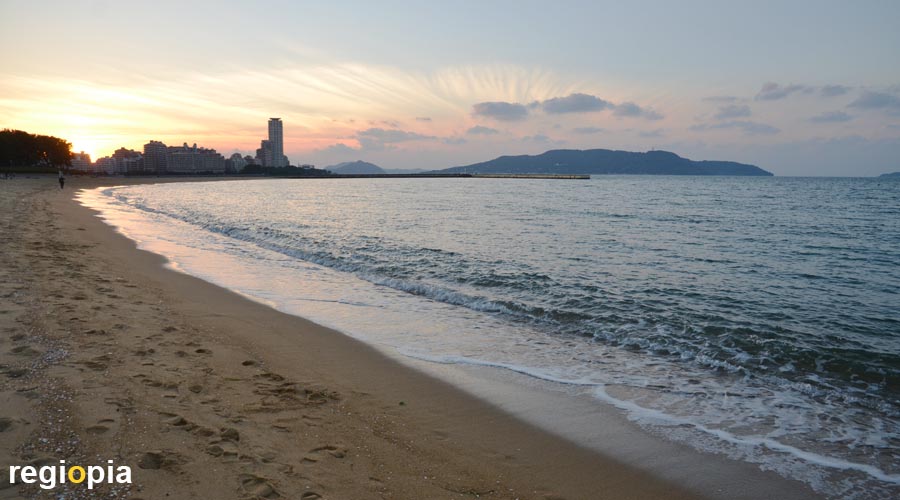
Hakata Bay
Fukuoka Bay is called Hakata Bay and is relatively well protected from storm surges by offshore islands. Due to its proximity to the Asian mainland, Hakata Bay has been the target of invaders. Korean pirates raided the city several times, stealing women and food. The two Mongol invasions, which failed in 1274 and 1281, also took place here. The divine wind Kamikaze helped to decimate the attackers' ships twice, so that the attack failed.
Since then, the bay has changed it's shape due to landfills. The beach and the district behind the shore has emerged in the 1980s. At the Fukuoka Tower there is a small pier with restaurants and tents where meat skewers are sold. Since the Japanese prefer a genteel paleness, the beach is best visited in the evening, just before sunset.
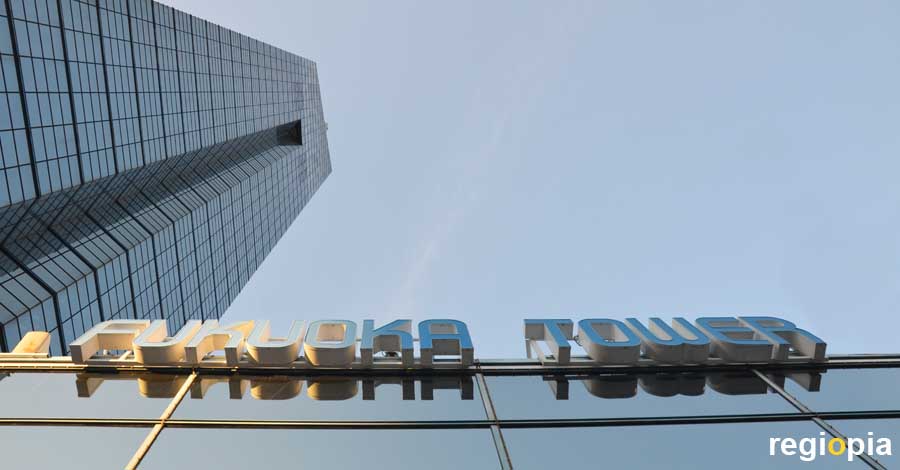
Fukuoka Tower
The Fukuoka Tower is located directly on the beach and is one of the most famous landmarks in the city. The glass tower looks like a skyscraper, but is "only" an observation tower. The tower is empty inside, there are no floors below the observation deck. This means you can enjoy the view while taking the elevator.
The Fukuoka Tower is a steel construction that was clad with mirrored glass. The tower is 234 m high. The highest viewing platform is at a height of 123 m. The remaining height is achieved by the 111 m tall antenna. The Fukuoka Tower was opened in 1989. The tower is earthquake-proof up to a magnitude of 7 and can withstand wind speeds of up to 230 km / h.
Map of Fukuoka attractions
ads
Travel Guide Fukuoka
Welcome to Fukuoka
Fukuoka is the largest city on the island of Kyushu with around 1.6 million inhabitants. The city is well connected to the rest of Japan via Hakata train station. The Shinkans trains drive over a bridge to the main island of Honshu. The Shinkansen only takes around 2.5 hours to Osaka.
ads
ads


